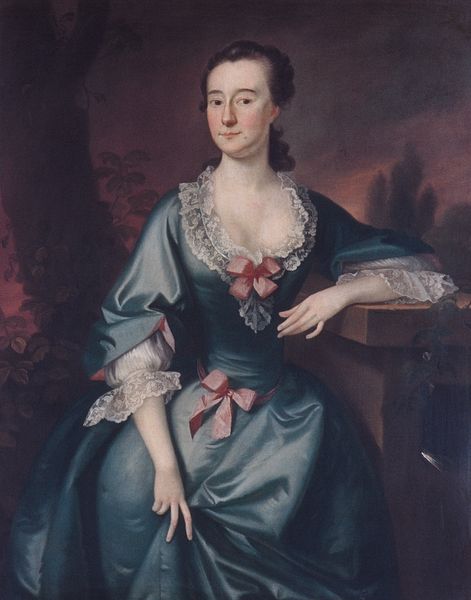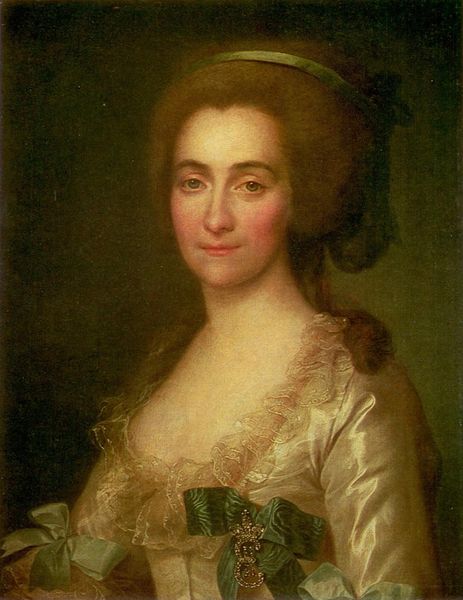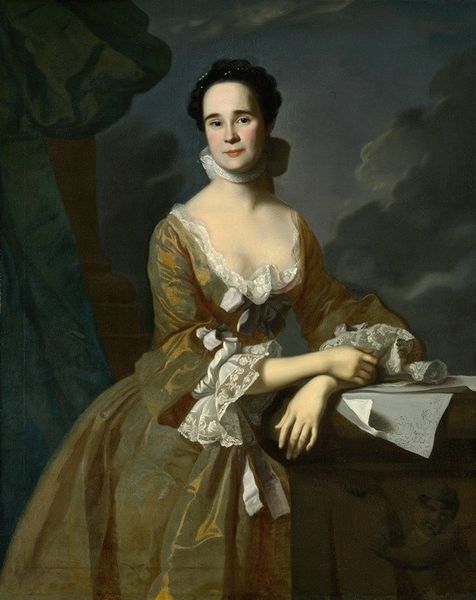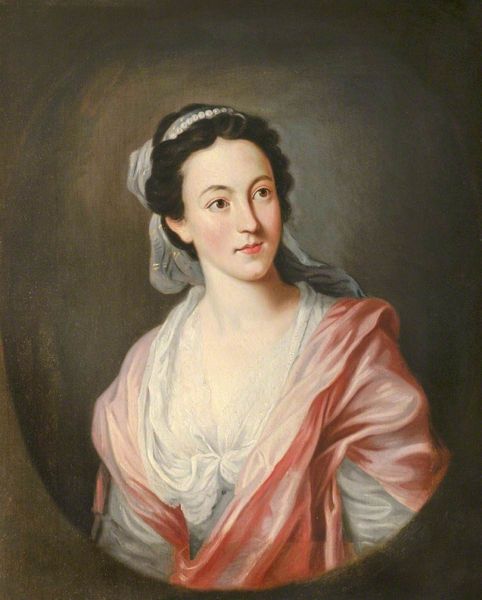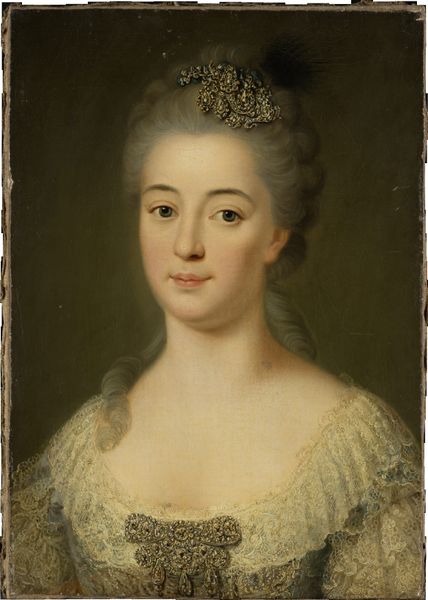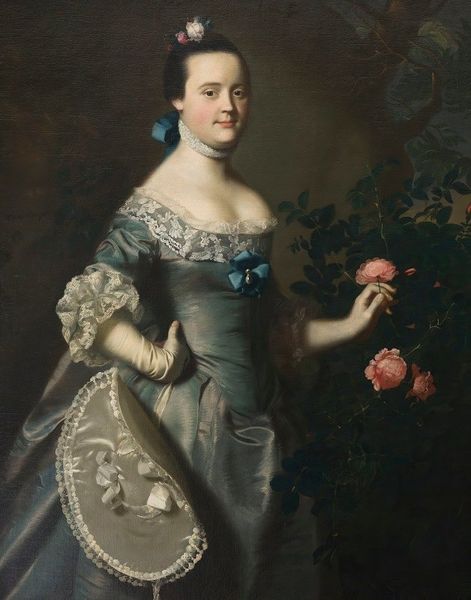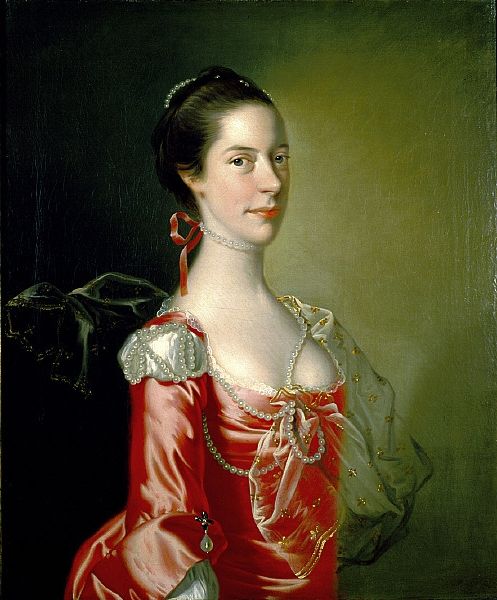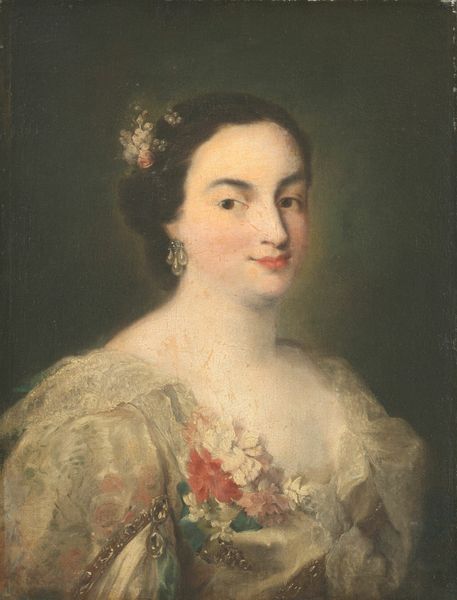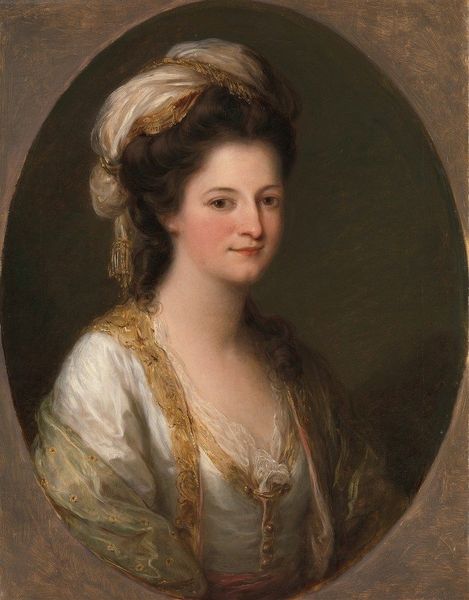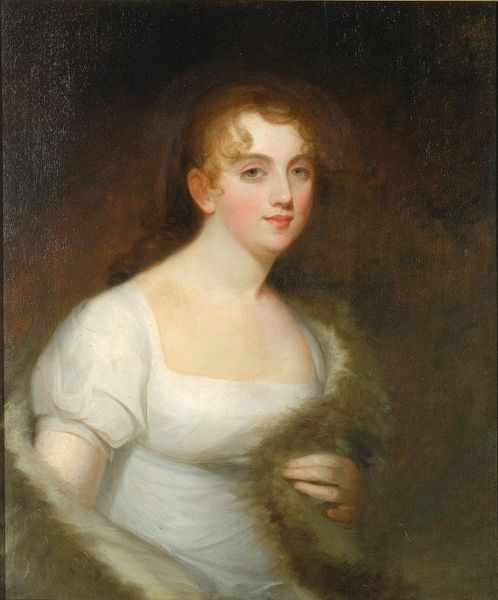
Copyright: Public Domain: Artvee
Editor: Here we have John Singleton Copley's "Jane Browne," painted in 1756, using oil paints. It’s quite striking how serene she appears, but also how her gaze feels direct and perhaps a bit challenging. What catches your eye when you look at this portrait? Curator: I see a carefully constructed presentation of identity. The pearls in her hair, the ribbons and lace of her gown—they all speak to a certain social standing, of course, but also to the aspirations and values of the sitter and, by extension, of the burgeoning colonial elite. What do these adornments signify, do you think? Editor: Perhaps that the Browne family had wealth and social standing, something they wished to display in the colonies? Curator: Exactly. And the portrait itself serves as a symbol—an artifact documenting their history and place in society. How interesting to see that visual vocabulary travel and evolve as it moved from Europe to the American colonies. What does her face suggest to you, devoid of grand emotion, almost plain in her assessment of the world? Editor: I think that restraint shows her self-possession. Curator: Indeed. Notice how that contrasts with the softness of the pink and the richness of the gold shawl? It’s a fascinating interplay between control and ostentation. What message would this composition convey to viewers then versus now? Editor: Now, it is about how far our understanding of identity and status has shifted since then, wouldn’t you say? It makes you wonder what will endure, doesn’t it? Curator: Absolutely. Looking through time’s symbolic lens, her portrait makes me question how individuals use image and material to construct their perceived identities, generation upon generation.
Comments
No comments
Be the first to comment and join the conversation on the ultimate creative platform.

